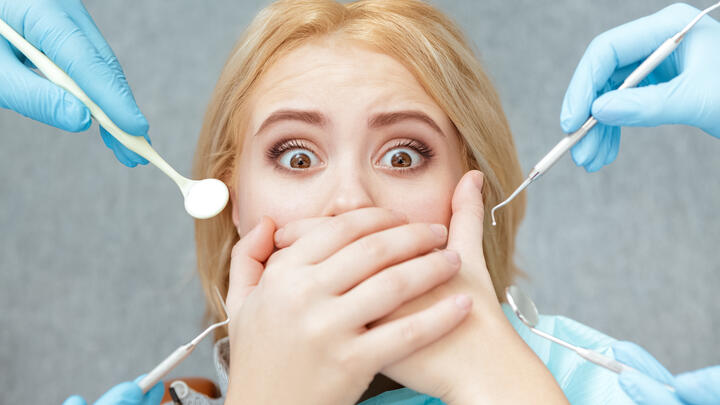3 min read
Women Are at Greater Risk of Gum Disease

The basic steps to healthy and happy gums are:
- Gentle, regular brushing and flossing
- Using mouthwash to rid your mouth of damaging bacteria
- Avoiding irritants like tobacco (duh - no smoking!) and maintaining a healthy diet with a limited alcohol
Women and Gum Disease
Unfortunately, the sum total of a woman’s fluctuating progesterone levels through life puts her more at risk for gum disease. Charlene Krejci, a Case Western Reserve University periodontist, said:"There's definitely a gender-specific connection between women's hormones, gum disease, and specific health issues impacting women. Although women tend to take better care of their oral health than men, the main message is women need to be even more vigilant about maintaining healthy teeth and gums to prevent or lessen the severity of some of women-specific health issues."
Women's Gums During Puberty
As if puberty isn’t bad enough - girls have to deal with bloody gums, too? Due to surging levels of both progesterone and estrogen during puberty, girls are much more likely to experience gum sensitivity, irritation or bleeding. The best treatment is a good oral care routine: brush gently, floss faithfully. Try the ISSA™ or ISSA mini for an especially gentle brushing experience - their soft and flexible bristles are made from silicone to be completely non-abrasive on teeth and gums, while still cleaning them effectively.Women's Gums During Menstruation
Three or four days before your period, you may experience that oh-so-adored phase known as PMS. Symptoms of PMS affect different women differently - or if you’re lucky, not at all - and some women may experience elevated levels of gum sensitivity or gingivitis during this stage of their cycle. If you experience reappearing gingival (gum) bleeding, a bright red swelling of the gums between the teeth, and sores on the tongue and inside of the cheek, it should clear up once your period starts, but if not, visit your dentist.Oral Contraceptives and Sensitive or Bleeding Gums
Birth control pills simulate the same increase in hormones - like progesterone - that occurs in the female body during pregnancy, so often taking birth control pills can lead to bloody gums. However, not all birth control pills are created equal, so if you have been prone to gum sensitivity or gingivitis in the past, ask your doctor about birth control pills with lower hormonal levels or non-hormonal birth control options.Women's Gums During Pregnancy
Progesterone levels are through the roof during pregnancy. Of course your body is going through all sorts of changes - bloody gums may be one you didn’t anticipate. When your progesterone levels are high leading up to menstruation, that’s only a few days worth of sensitivity, but when you’re coping with increased progesterone levels for nine months, you face some more daunting challenges. Beginning in the second or third month of pregnancy, you may begin to experience redness, swelling and sensitivity in your gums. These symptoms, known as “pregnancy gingivitis”, often continue into your eighth month and drop off during your ninth (when your progesterone levels begin to drop as the body readies for labor). Pregnancy “tumors” are one more gum disease to worry about - don’t worry, they’re not cancerous, but they can be painful. Usually occurring during the third month of pregnancy, a pregnancy tumor (or granuloma) is an extreme inflammatory response to an irritant like food particles or plaque. If you see a large lump on your gum tissue with deep red markings on it, visit your doctor for cleaning and removal. Pregnant women should be especially vigilant about their oral care routine - using their ISSA or ISSA mini twice a day with regular flossing and mouthwash as well. It may also be a good idea to see your dentist more often than the usually prescribed semi-annual cleaning.Women's Gums During Menopause
Menopausal and post-menopausal women also experience extreme changes in hormone levels that can lead to oral problems like dry mouth, pain and burning in gum tissue and altered taste, especially salty, peppery and sour. For more information on dental care, visit the American Dental Association and read more about the FOREO ISSA.Disclaimer: The information on this website and any related links are for general informational purposes only and should not be considered a substitute for professional advice. Do not use the information on this website for diagnosing or treating any medical or health condition. If you have or suspect you have a medical problem, contact a professional healthcare provider.








Leave a comment